I don’t often see hinoki cypress bonsai forests, and I wouldn’t expect to see multiple hinoki bonsai forests in the same exhibit. The recent Taikan-ten exhibition in Kyoto, Japan, featured four of them.

Tsuyama hinoki cypress (Photos by Boon Manakitivipart)
I enjoy hinoki bonsai because they are often styled into abstract shapes with silhouettes that resemble full-sized trees seen from a distance.
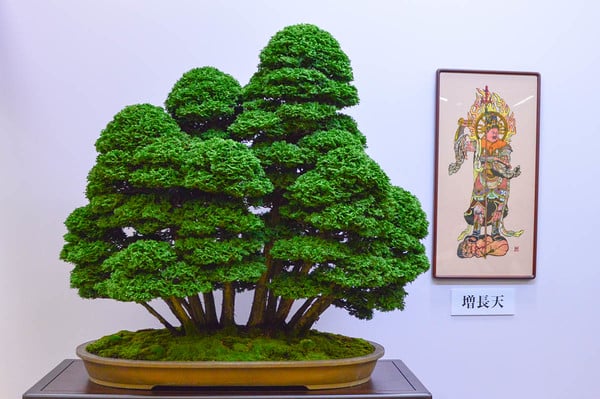
Tsuyama hinoki cypress
Seeing several of these forests in the same exhibit provides a good opportunity to compare different approaches to branch arrangement, trunk arrangement and planting angle, as well as silhouette.
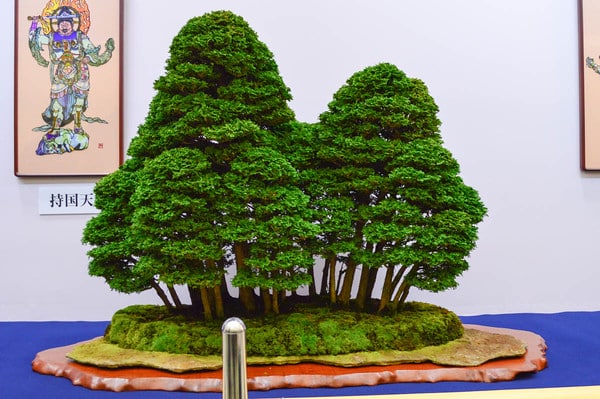
Tsuyama hinoki cypress
If anyone knows the story behind this special exhibit – or why the trees are presented with prints of what appear to be temple guardians – do please share.
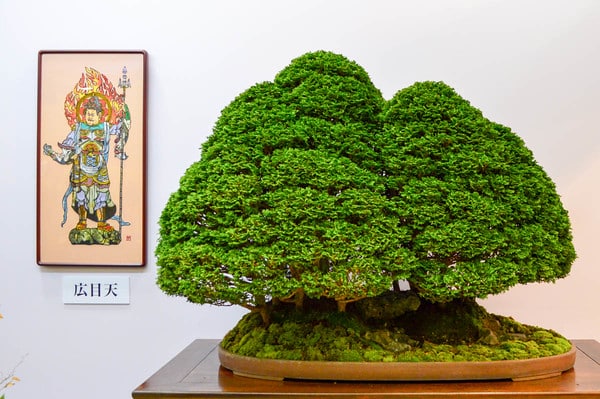
Tsuyama hinoki cypress
Below, Boon checks in with two of Fujikawa Kouka-en’s finest – Bjorn Bjorholm and Dario Mader.
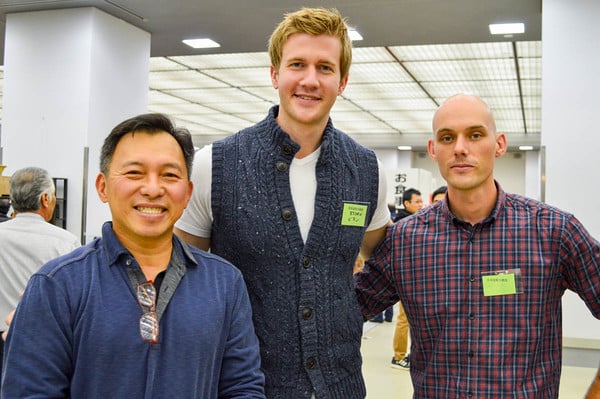
Boon, Bjorn and Dario
There was something fun about every display at the event, like this massive gardenia with fruit on the first branch.
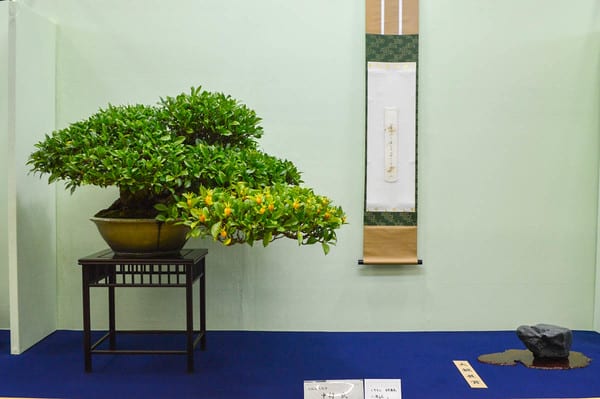
Gardenia
The ezo spruce below is accented by a curious euonymus and scroll.
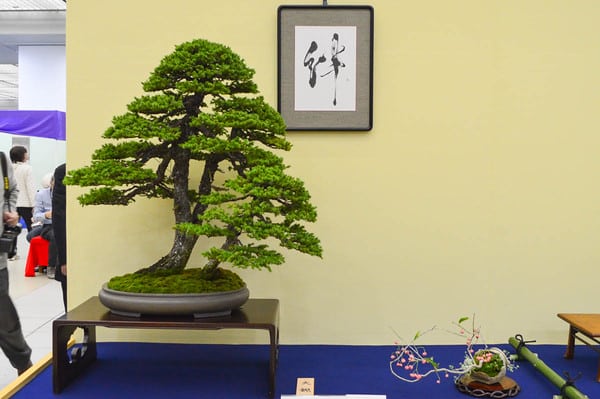
Ezo spruce

White pine with suiseki in moss
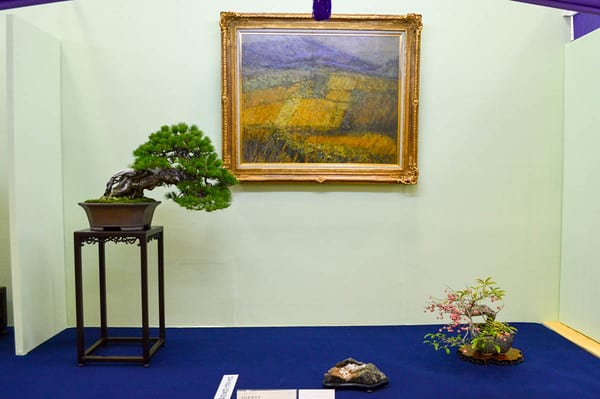
White pine with euonymus and painting
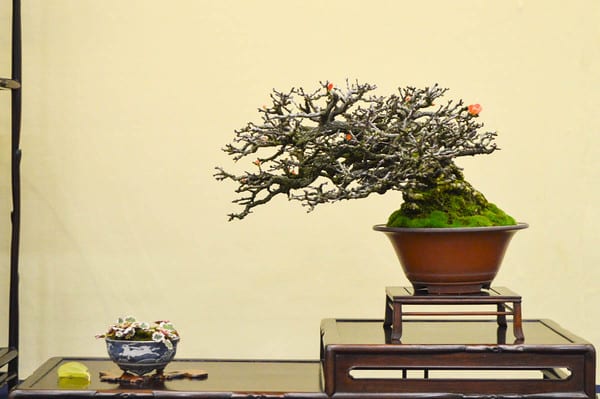
Awesome Japanese flowering quince ‘chojubai’
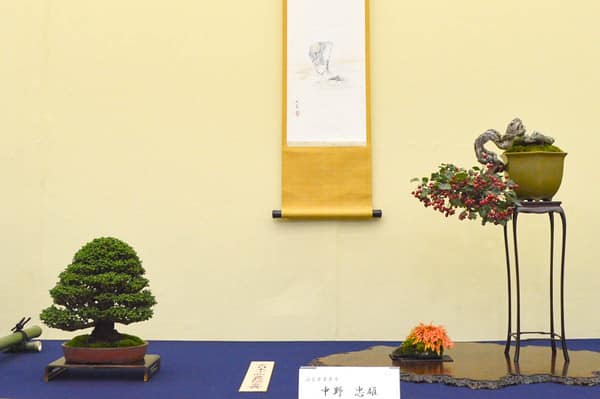
A good example of a 3 point display with more than three elements – cypress with scroll and hawthorn/accent combo dislpayed as a single unit
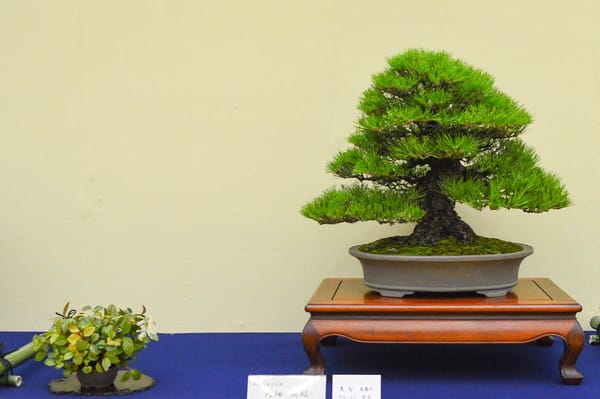
Japanese black pine
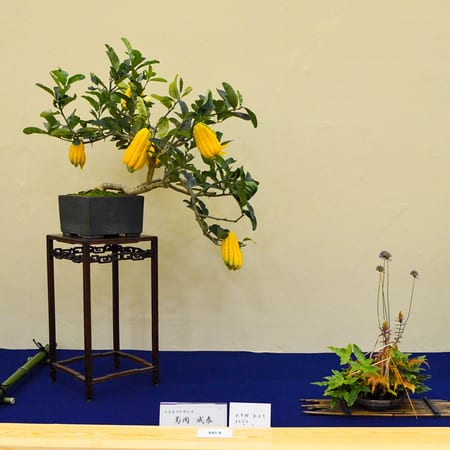
Buddha’s hand citrus
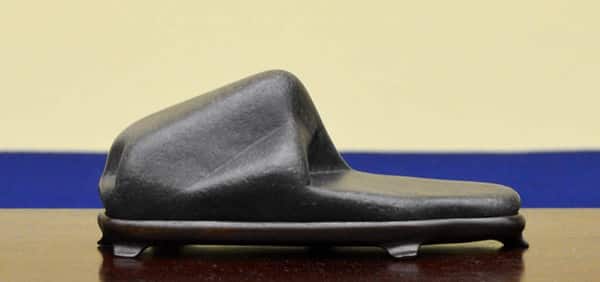
Suiseki
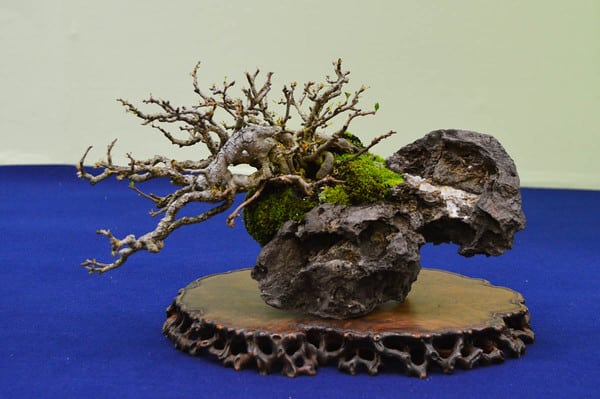
Japanese flowering quince ‘chojubai’ growing on a rock
Subscribe to Bonsai Tonight
New Posts Delivered Every Tuesday and Friday
John says
Very cool!
Sage Smirh says
Absolutely awesome trees. What a treat it is to see them. Thanks again to Jonas for making this blog happen and thanks to Boon for the pics
Paul says
I have a tough time making Hinoki back bud. Any tricks that will help or are is that feature common to Hinoki.
Jonas Dupuich says
Keeping trees very healthy and feeding lots can help, as can ensuring light in the area where the buds are desired, but I don’t count on back buds on hinoki the way I do on juniper. Grafting is the primary alternative.
hoechuah says
The four prints accompanying the hinoki cypress forests are the Buddhist Four Guardian Kings, called the Four Lopakala in Sanskrit or Shitenno in Japanese. They guard the four corners of the earth: north, south, east, west. Don’t know if they were placed at the four cardinal directions in Taikan-ten or not. May be that’s the connection.
My other guess is Hinoki Cypress is a preferred timber used for temple beams and sculptures because hinoki timbers are straight, tall, big and resistance to decays. Kyoto is a city full of temples.
margotheli says
Arte, arte y belleza
Jeffrey Granger says
Thank You